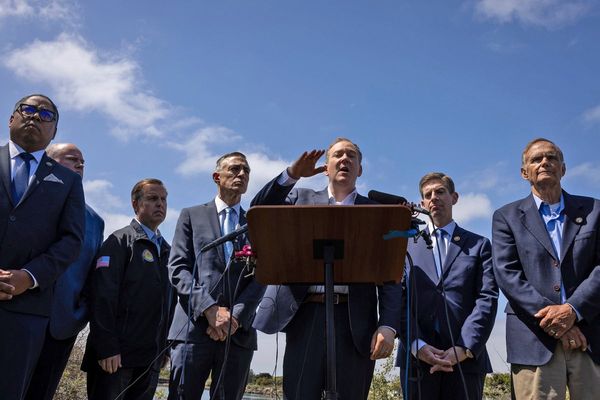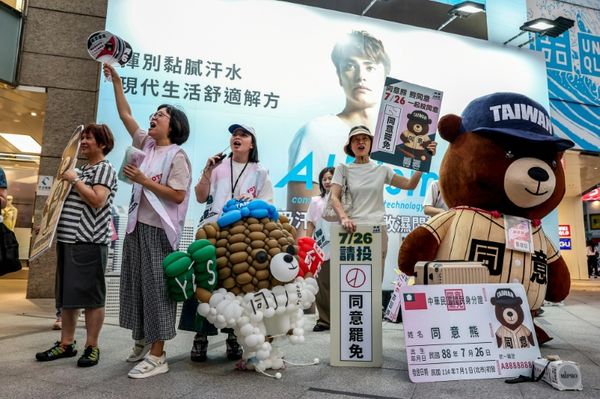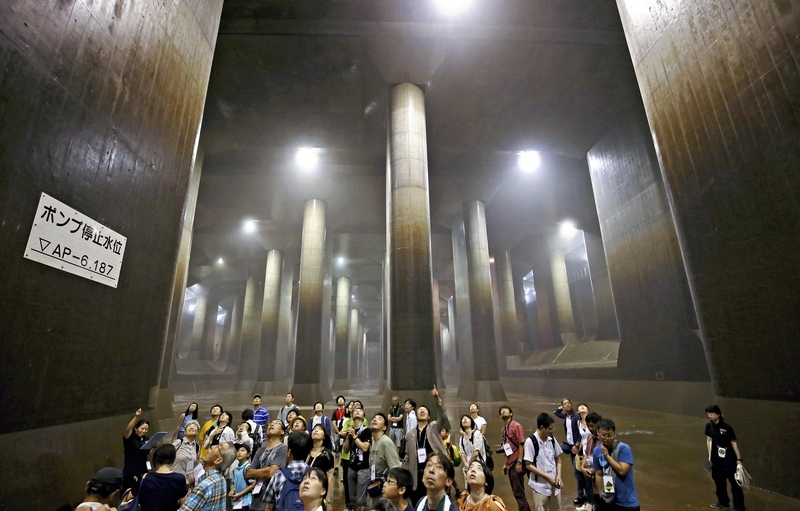
KASUKABE, Saitama -- A flood prevention facility in Kasukabe, Saitama Prefecture, dubbed the "Disaster Prevention Underground Shrine" has been open to the public since Aug. 1, in a bid to utilize it as a tourism resource.
Officially named the Metropolitan Area Outer Underground Discharge Channel, the facility aims to prevent flooding in the neighboring area by channeling the water of swollen rivers via underground tunnels to the Edogawa river, which separates Saitama and Chiba prefectures.
The vast dim underground space of the Pressure-Adjusting Water Tank was built to reduce the flow of water. Its area is equivalent to two soccer fields, and it is bolstered with 59 concrete pillars, each 18 meters tall. The spectacular view makes visitors feel like they've strayed into an underground shrine.
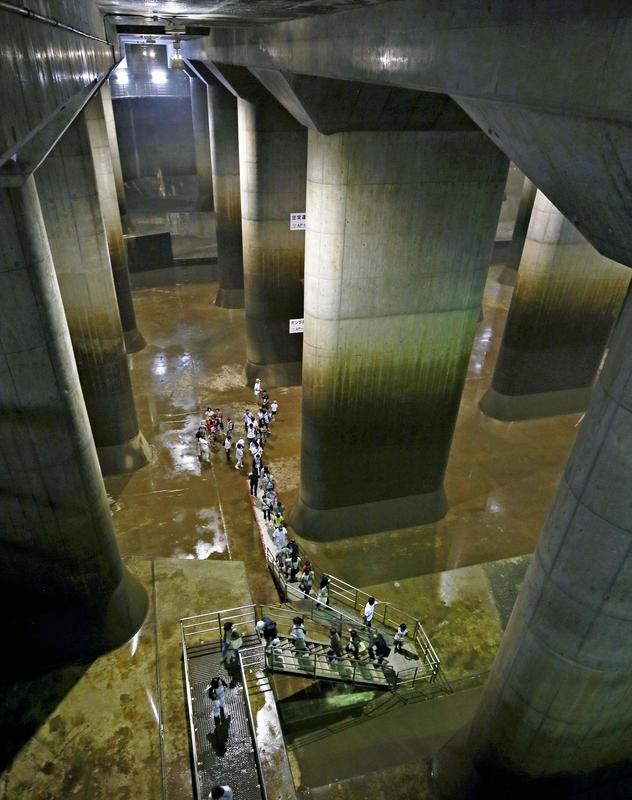
The facility is managed by the Land, Infrastructure, Transport and Tourism Ministry, and has protected the area from being flooded seven times a year on average since it started preliminary operations in 2002. When a typhoon hit the area in September 2015, the tank prevented a possible flood by swallowing a total of 19 million cubic meters of water over four days to discharge the water into the Edogawa river.
The tours were planned by a committee including the ministry and the Kasukabe city government, as one of the tourism projects for visits to major infrastructure such as dams and bridges. They started in cooperation with the Tokyo-based tourism company Tobu Top Tours Co.
Before the tours began, the facility was open to the public for free three times a day on weekdays and two Saturdays a month, accepting 100 people a day. Now visitors are allowed to go underground seven times a day with a daily capacity of up to 350 people, allowing about five times the number of monthly admissions. The tours, which require a fee, are guided by eight "concierges," and visitors receive a memorial card.
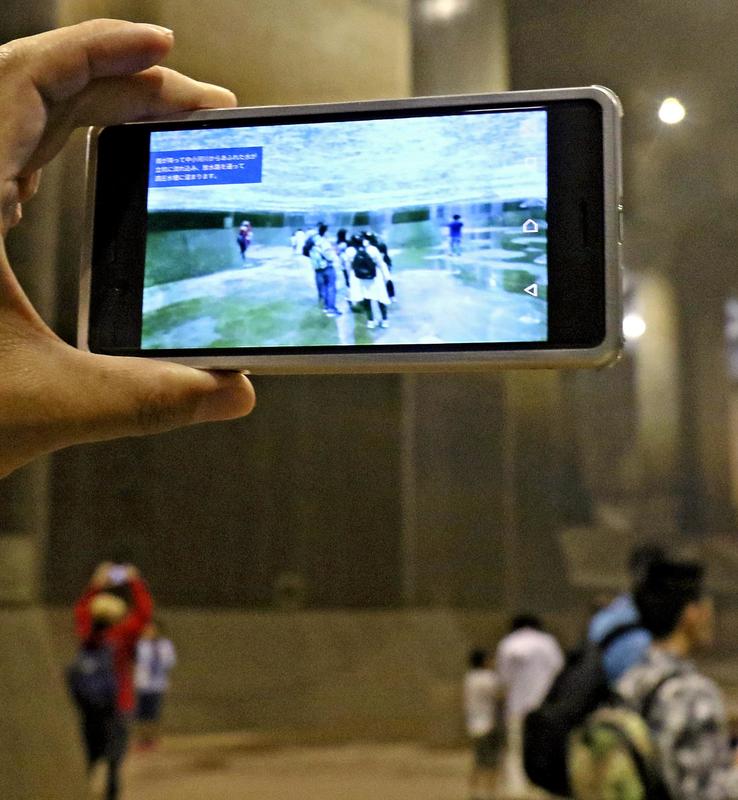
Toru Furuuchi, 45, from Tokyo's Asakusabashi district, joined the tour with his family. "I was totally overwhelmed by the scale of this place. Disasters related to heavy rains have occurred across the country this year, so it's good especially for children to learn about the threat of floods by visiting here. It's not free, but it's better to have more people come here," Furuuchi said.
Admission is 500 yen until the end of August and will be 650 yen from September. Tours are available only in Japanese, and reservations are required via the internet or by phone. For more information, visit http://www.ktr.mlit.go.jp/edogawa/edogawa00672.html
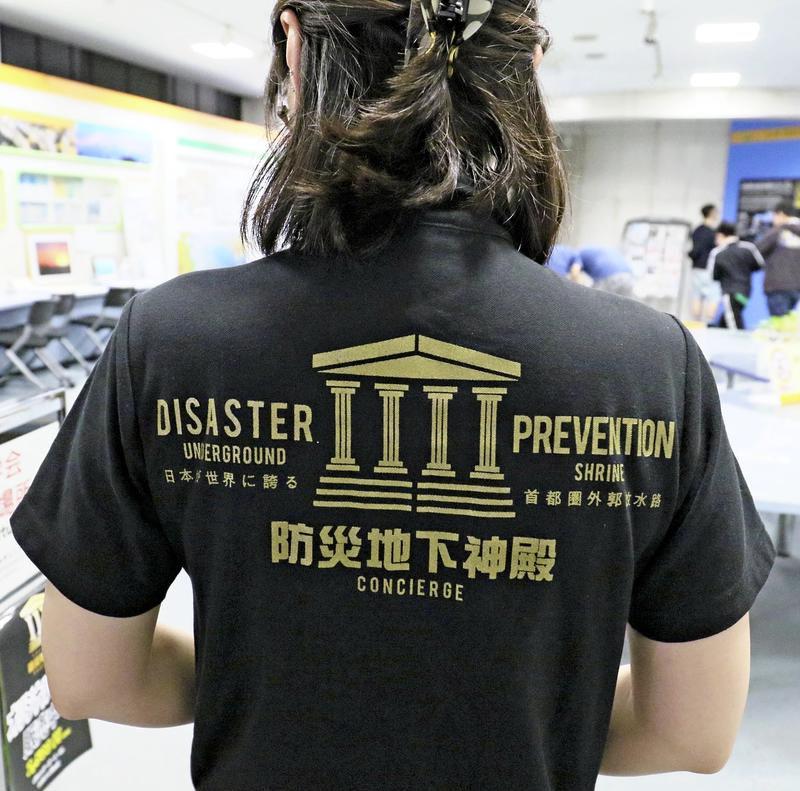
(New Japan, Old Japan is a series exclusive to The Japan News)
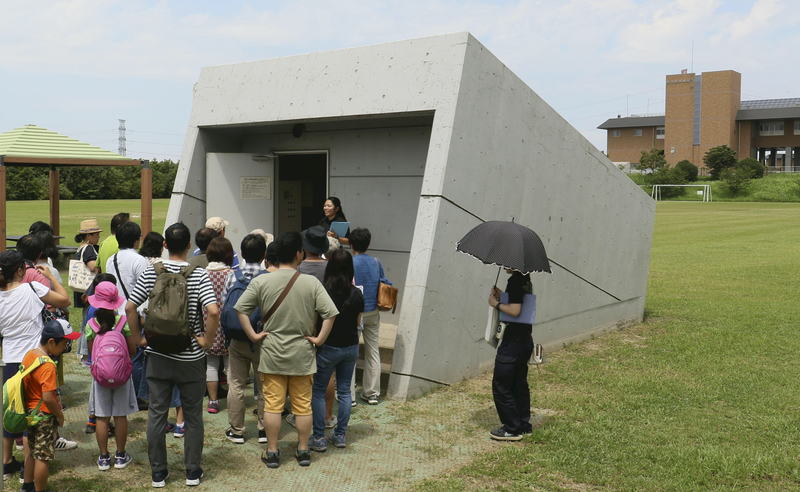
Read more from The Japan News at https://japannews.yomiuri.co.jp/
